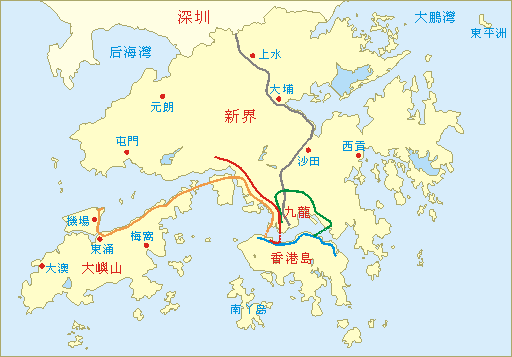
|
A Future Hong Kong |

We have the vision of the Hong Kong Republic being a democratic sovereign state headed by a President and composed of the following government organs.
Parliament: Similar to the existing legislature, the Parliament shall have 60 legislators all elected by universal suffrage. The Parliament is empowered to assign judges to courts at all levels, pass motions to dismiss the President, and enacted the Constitution of the Republic of Hong Kong.
Hong Kong Courts: Judicial bodies upholding the rule of law in Hong Kong.
Provinces: Hong Kong territory comprises three provinces, namely Hong Kong Island, Kowloon (including Sai Kung and Tseung Kwan O), and New Territories (including Lantau Island). Highly autonomous, the three provincial governments shall have their respective governors and provincial councils directly elected by the electorate.
Counties: Under the provinces shall be 18 counties similar to the existing 18 districts. A county, designed to deal with local affairs, shall have its magistrate and county council directly elected by the electorate.
Defence: The Hong Kong Self Defense Forces (HKSDF) shall be composed of professional soldiers trained to protect Hong Kong against any invasions.
Year: Hong Kong may either adopt Anno Domini (A.D.) or have the issue, that is, whether Hong Kong shall specify its first calendar year to highlight its statehood, decided upon by the Hong Kong Parliament. We suggest that Hong Kong shall set the year of the birth of the Republic of Hong Kong to be the First Kin Kwok Year, where the words Kin Kwok derive from the Cantonese pronunciation of the English phrase establishment of a nation.
National Flag: The national flag and the national anthem of Hong Kong shall be decided upon by the Hong Kong Parliament or determined by a plebiscite. As regards the Hong Kong national flag, our suggested options are as follows. Any suggestions about the Hong Kong national flag and national anthem are welcomed.
|
Version 1 |
Version 2 |
Version 3 |
Version 4 |
Version 5 |
|
|
|
|
|
|
Version 1: The five petals denote the top five ethnic groups of Hong Kong citizens nowadays, namely Chinese, Indians, Bangladeshi, Pakistani, and Caucasians.
Version 2:
Hong Kong had only a few fishery villages and thousands of villagers before the
United Kingdom acquired Hong Kong in 1842. The fishing boat in the middle of
the Hong Kong national flag represents the economy of Hong Kong in the 19th
century. The blue stripes that flank the fishing boat depict the economic and
cultural interaction between Hong Kong and the rest of the world since the 19th
century.
Version 3: The upper left quarter of the Hong Kong national flag bears a British national flag to indicate that the Republic of Hong Kong should be a member state of the Commonwealth.
Version 4: The red background
denotes that Hong Kong gains independence from the Red China to become the
Republic of Hong Kong.
The dragon and
Version 5: The cotton flower denotes Hong Kong's paramount status in East Asia. The 18 styles indicates the 18 constituencies. The golden stripes surround the centrally-located cotton flower to indicate that Hong Kong's nation-building process is in line with global trend and people's expectations. The blue background denotes the sea and implies Hong Kong's British past.